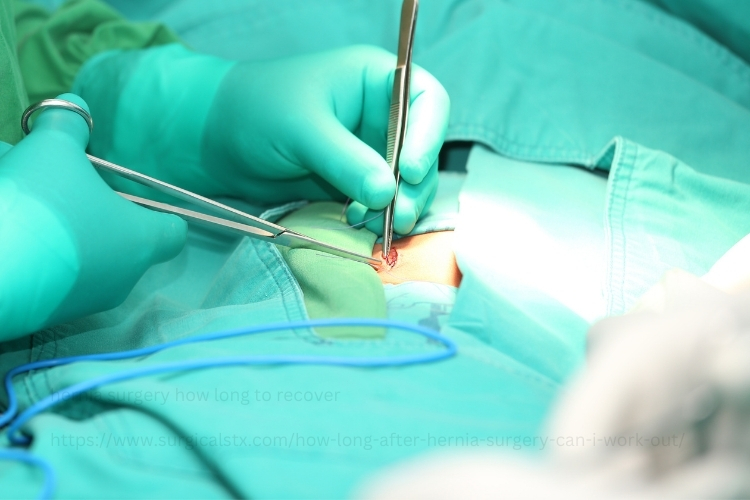Hernia surgery is a common and effective procedure for repairing various types of hernias, such as inguinal, umbilical, or hiatal hernias. If you’ve undergone hernia surgery, you might be eager to return to your normal routine, including physical exercise. However, recovery after hernia surgery requires patience and a careful approach to avoid complications and ensure long-term success. This blog provides a comprehensive guide to understanding hernia surgery recovery, including timelines, safe exercise practices, and tips for a smooth rehabilitation.
Understanding Hernia Surgery Recovery
Hernias occur when an organ or tissue pushes through a weak spot in the muscle or connective tissue, often causing discomfort and limiting daily activities. Surgical repair involves reinforcing the affected area using sutures, mesh, or a combination of techniques. While hernia surgery is often minimally invasive, the recovery process can vary depending on the type of hernia, the surgical method used, and your overall health.


Types of Hernias Commonly Treated with Surgery
- Inguinal hernia: Found in the groin area, this is the most common type of hernia.
- Umbilical hernia: Occurs near the belly button.
- Hiatal hernia: Involves the upper stomach pushing through the diaphragm.
- Epigastric hernia: Appears between the navel and ribcage.
- Femoral hernia: Commonly seen in the upper thigh or groin.
Each type of hernia may have specific recovery recommendations, but general guidelines apply to most cases.
When Can I Start Exercising After Hernia Surgery?
Exercise is an essential part of recovery, but it must be approached gradually. Jumping into strenuous activities too soon can strain the repaired area and increase the risk of recurrence. Here’s a week-by-week guide:
Week 1: Rest and Gentle Movement
During the first week after surgery, rest is paramount. Light walking around your home is acceptable to promote blood circulation and prevent stiffness. Avoid any activity that requires bending, lifting, or stretching.
Weeks 2–3: Light Walking and Daily Activities
By the second week, you may feel comfortable walking short distances outside your home. You can also resume light household tasks, provided they don’t involve heavy lifting or straining. Driving may be possible if you’re no longer taking pain medication.
Weeks 3–4: Introduce Gentle Exercises
As you progress into the third and fourth weeks, you can start incorporating gentle core-strengthening exercises and stretches:
- Hamstring Stretch: Lie on your back, extend one leg, and gently reach for your toes without straining.
- Seated Spinal Twist: Sit upright in a chair, cross one hand over your opposite knee, and twist gently to stretch your abdomen.
Month 2: Low-Impact Activities
By the second month, low-impact exercises such as swimming, cycling, or using an elliptical machine can be introduced. Activities like yoga and planking may also be beneficial, provided they don’t cause discomfort.
Months 4–6: High-Impact Workouts
Strenuous activities, including running, weightlifting, and high-impact sports, should be avoided until at least four to six months post-surgery. Always consult your doctor before resuming these activities to ensure your body is ready.

Factors That Influence Recovery Time
Several factors can impact how quickly you recover:
- Type of Surgery: Minimally invasive procedures like laparoscopic surgery generally have shorter recovery times compared to open surgery.
- Your Health: A strong immune system and good overall health can speed up recovery.
- Post-Surgery Care: Following your doctor’s instructions regarding rest, diet, and activity level is crucial for a smooth recovery.
Tips for a Smooth Recovery
- Follow Medical Advice: Adhere to all post-operative instructions provided by your surgeon.
- Eat a Balanced Diet: Proper nutrition supports healing. Focus on high-fiber foods to avoid constipation, which can strain the surgical site.
- Avoid Smoking: Smoking can impair wound healing and increase the risk of complications.
- Stay Hydrated: Proper hydration aids in tissue repair and overall recovery.
Why Is It Important to Wait Before Exercising?
Your abdominal muscles and surrounding tissues need time to heal and regain strength. Premature exercise can put undue stress on the repaired area, potentially leading to complications like hernia recurrence or delayed healing. By gradually reintroducing activities, you minimize risks and ensure long-term success.
Expert Hernia Care at Surgical Associates of Southern Texas
If you’re considering hernia surgery or need expert advice on recovery, Surgical Associates of Southern Texas is here to help. Our team, led by Dr. Murtuza Sakir, is dedicated to providing personalized care to patients throughout the Greater Houston area, including Katy, Cypress, The Woodlands, Memorial, and beyond.
Recognized as one of the Top Doctors of General Surgery in Greater Houston, Dr. Sakir specializes in hernia repair using advanced techniques that prioritize patient safety and long-term success. Whether you’re seeking treatment or post-operative guidance, our team is committed to supporting you every step of the way.



